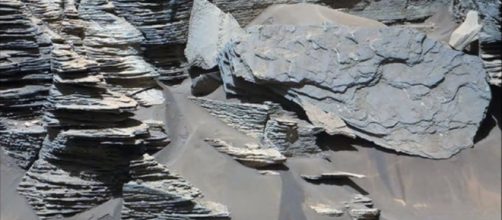For over a long period of time scientists have been trying to figure out the mysteries of Mars. It appears that they have made progress on various parts of the planet by discovering new unbelievable information. Apparently, the Red Planet might have had a flow of water on its surface billions of years ago.
According to Space, a new study suggests that the warm temperature on Mars during summer is capable enough to melt the edges of glaciers. Thus, creating a flow of melted water on the surface of the planet. Scientists have previously discovered river-like valleys on Mars.
The possibility of these valleys might have been created from the melted glaciers.
Mysterious Atmosphere
The present atmosphere on Mars is mysterious as it mostly contains carbon dioxide with no proper evidence of water. Some researchers state that the crater walls on the planet were caused by a form of melting water. On the other hand, a group of scientists believes that the crater walls are formed by hydrated salts.
Ashley Palumbo, a lead author and Ph.D. student at the Brown University compared the seasonal temperature on Mars to the Antarctic Dry Valleys. Palumbo stated that the temperature in the Antarctic dry valleys is enough to create and sustain lakes below freezing. With the present atmosphere on Mars, there might be a possibility for the same seasonal temperature as the Antarctic dry valleys.
Scientists from the Brown University are pursuing a research on Mars by using a state-of-the-art climate model. This will help them to continue with further research to understand the red planet and its mysterious atmosphere.
Did ancient Mars have water?
It turns out that four billion years ago, ancient Mars had formations of water and lake-beds. The atmosphere has changed over time with the disappearance of water but leaving behind strong evidence. In 2015, a study by Eliot Rosenberg from the Brown University determined the amount of water needed to create valleys and other water formations on Mars.
Scientists are now trying to understand how glaciers were melted in the early cold and icy Mars.
They are taking other aspects into consideration like impact cratering and volcanoes. On the other hand, NASA is also taking huge steps to study the planet better with its "Curiosity Rover." NASA is going deeper with their Mars Atmosphere and Volatile Evolution mission (MAVEN).
Due to the thin atmosphere present on Mars, the possibility of water present on the surface is very slim. Perhaps, there is frozen water deep inside the unexplored parts of Mars.


